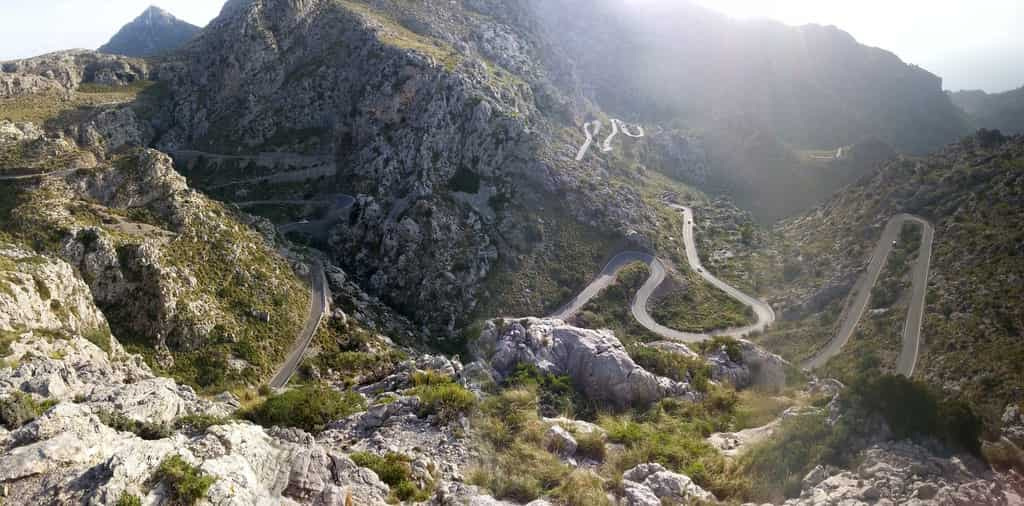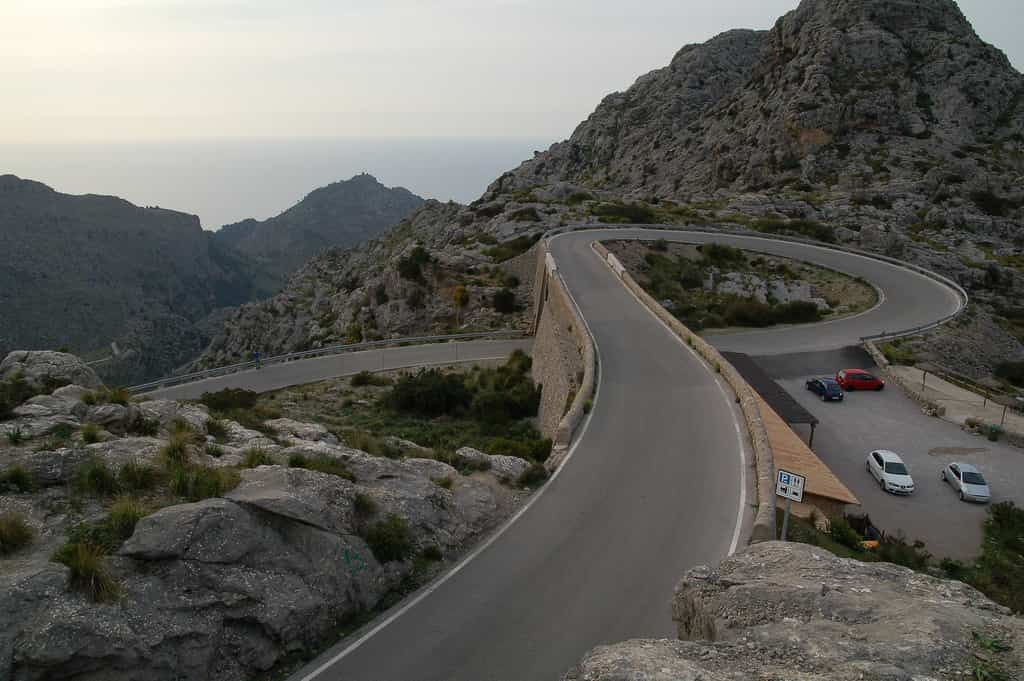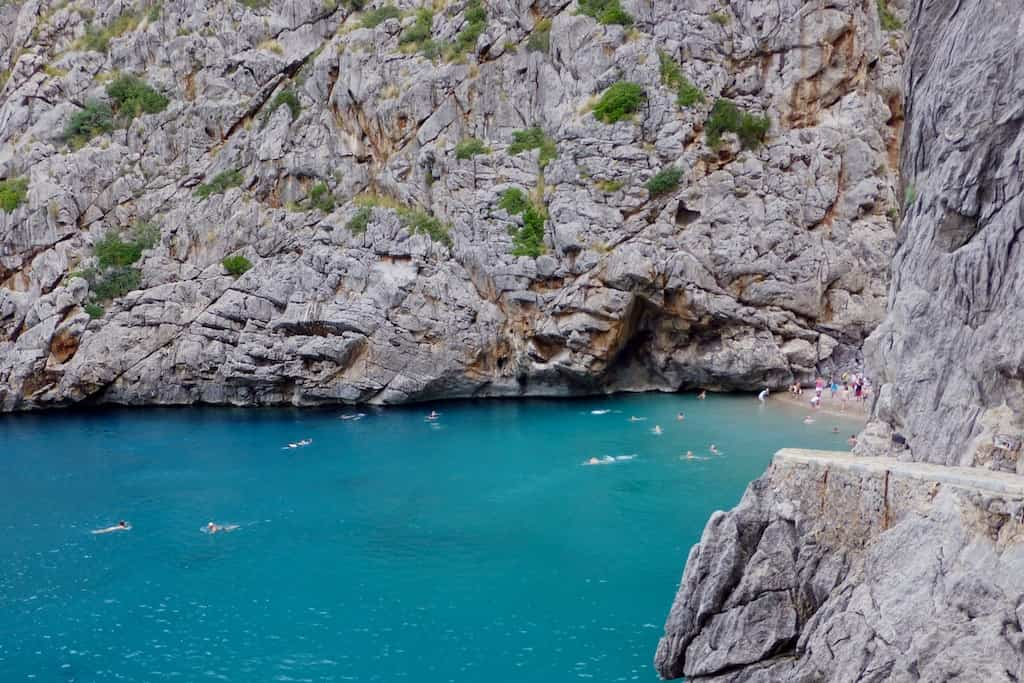The Sa Calobra road, officially known as MA-2141 and also known as the Snake Road, situated on the island of Mallorca, spans a mere 13 kilometers (8 miles), yet stands out as one of the most breathtaking scenic drives in the world. Winding through the rocky and rugged terrain of Mallorca, the road doesn’t boast particularly steep inclines, with the steeper sections having a gradient of just over 7%. Sa Calobra is situated in the Tramuntana mountain range on the northwest coast of Mallorca. The road connects the village of Escorca with the coastal area of Sa Calobra. If you relish cycling tourism, you’ll be undertaking a formidable challenge.
| Location | Mallorca, Balearic Islands, Spain |
| Hairpin turns | 12 |
| Elevation | 730 metros (2395 ft) |
| Type | Mountain and coastal road |
| Coordenates | E2°47'59.96" N39°51'2.95" |

Fog at Sa Calobra, luscofusco

Paorámica view of the hairpin turns in Sa Calobra, Morpheos
The road includes a notable mountain pass called Col dels Reis, which reaches an elevation of around 730 meters (2,395 feet). The ascent to this pass and the subsequent descent are particularly challenging and offer stunning panoramic views. The road leads to the small coastal village of Sa Calobra, where visitors can find a picturesque cove with clear turquoise waters. The beach is framed by steep cliffs, adding to its natural beauty.
Driving Sa Calobra

Photo Herr Herrner
Throughout its course, the road showcases spectacular features, including 12 180-degree turns and a 360-degree turn called Nus de sa Corbata (Knot of the Tie), where the road passes beneath itself. This location stands out as one of the most renowned points along the entire route. Sa Calobra culminates as a dead-end road leading to a paid parking lot overlooking Tuent Beach, with the typical travel time between points being approximately 25 minutes. Before arriving at the beach, you’ll encounter a junction leading to La Calobra Cove, one of the most spectacular and touristy coves on the entire island of Mallorca.
- Be prepared for narrow roads and sharp turns. The road is only wide enough for one car in many places, so you’ll need to be patient and cautious when driving.
- Take your time. Don’t rush to get to your destination. The scenery is too beautiful to miss.
- Stop and enjoy the view. There are several pull-outs along the way where you can stop and take in the scenery.
- Respect the locals. The locals live in this area and are used to tourists. Be respectful of their property and way of life.


Sa Calobra beach, Helen Zhang
Designed by Spanish engineer Antonio Parietti (also responsible for the construction of the road to Cape Formentor), the road was painstakingly built in 1932 entirely by manual labor, without the assistance of machinery, adding to its spectacle. Devoid of tunnels, the road undergoes an elevation change of about 800 meters, requiring over 30,000 cubic meters of stone for its construction. Its narrowness, lack of a central dividing line, and sparse guardrails make driving challenging, particularly during the peak summer tourism season. Additionally, the asphalt becomes treacherous on rainy days, rendering Sa Calobra one of the most arduous and perilous roads to navigate in Spain.
Sa Calobra Road in Google Maps
Spectacular descent of Sa Calobra on a bicycle
If you want to feel adrenaline mixed with a bit of fear, don’t miss this spectacular video of a descent down the road on a bicycle. Pay attention to the incredible braking maneuvers of the cyclists in each hairpin turn.
Popular culture
Sa Calobra is prominently featured in the movie “Cloud Atlas”, a 2012 science fiction film directed by the Wachowski siblings (best known for the Matrix) and featuring a star-studded cast including Tom Hanks, Halle Berry, Susan Sarandon, and Hugh Grant.
Header pic pdjohnson


 (5 votes, average: 4.80 out of 5)
(5 votes, average: 4.80 out of 5)










